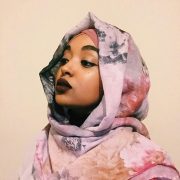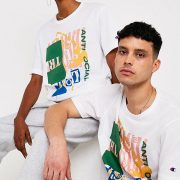#CultureCheck – Unveiling the beauty in Headscarves

We are conditioned in Western society to praise hair. Shiny blonde straight locks. Or maybe a curly brown loose Eurocentric bounce. (Honestly, how many times a day do you see that Head & Shoulders shampoo advert?) This narrative inhibits reality, as what if you choose to conceal your hair regularly? Why is this choice of beauty ostracised, condemned and poorly represented in the media? This weeks #CultureCheck is back, and we’re continuing our educational sessions, in the bid to flush negative stigma and appropriation down the toilet.

I don’t know about you #CultureCheck student, but I’m tired of atypical stereotypes and representations in the media. The Office for National Statistics as of March 2018 estimated approximately 3,372,966 people in the UK are Muslim, so it is logical to estimate that around half of those statistics would be women, and equally half of that percentage would wear a hijab or another style of Muslim headwear. Which is why it’s completely intolerable and unacceptable, that the representation of Muslim Headwear, is only now beginning to arise in mainstream media; thanks to Superstars such as Halima Aden, Noor Tagouri and many more queens I have not listed. With recent events in British history, fuelling what is often an ignorant perception and assumption of Islam, wearing Muslim headwear in western society couldn’t be anymore challenging, and like last weeks focus many people know what these pieces of attire are, but not why it is being worn or the thoughts of the person wearing them.
So if you’re joining us just for this lesson, (you’re a part time student I see), this is a cohesive discussion, fuelled by the perspectives of the natives, dedicated to giving you recognition, insight and a brief throwback history lesson, into their cultural fashion and more; there is no right or wrong answer, and nobody is in any position to dictate or measure someone’s faith, choices and persona. So put on the kettle, I’ve got the biscuits, and lets get started shall we?
I will ask 5 young adults weekly, what they think and feel about a piece of their cultural clothing/accessory and how it defines them in this generation. This week I asked 5 Muslim women, who wear their headwear, daily to occasionally. There is no right or wrong answer, only enlightenment, education and respect, here are the questions below.
- How does your cultural item make them feel?
- What does it mean to you and why and where do you choose to wear it?
- Do current times challenge and alter your desires to wear it?

But firstly, here is an explanation sourced from the BBC, detailing the differed choices of Muslim Head Attire, if you are not familiar.
‘Muslim women wear differed head attire all around the world. Headscarves are seen as a sign of modesty by people who wear them, and a symbol of religious faith. In Denmark, Europe, a ban on wearing face veils in public came into force on 1 August 2018. Headscarves are seen as a sign of modesty by people who wear them, and a symbol of religious faith. Although some muslim women choose to wear a head scarf some do not. The word Hijab describes the act of covering up generally, but is often used to describe the headscarves worn by Muslim women. These scarves come in many styles and colours. The type most commonly worn in the West covers the head and neck but leaves the face clear.
The Niqab is a veil for the face that leaves the area around the eyes clear. However, it may be worn with a separate eye veil. It is worn with an accompanying headscarf.
The Burka is the most concealing of all Islamic veils. It is a one-piece veil that covers the face and body, often leaving just a mesh screen to see through.
The Al-Amira is a two-piece veil. It consists of a close fitting cap, usually made from cotton or polyester, and a tube-like scarf.
The Shayla is a long, rectangular scarf popular in the Gulf region. It is wrapped around the head and tucked or pinned in place at the shoulders.
The Khimar is a long, cape-like veil that hangs down to just above the waist. It covers the hair, neck and shoulders completely, but leaves the face clear.
The Chador, worn by many Iranian women when outside the house, is a full-body cloak. It is often accompanied by a smaller headscarf underneath’
The original extract containing that information, can be found here alongside supporting imagery. Now, let’s hear what these queens had to say!
‘It makes me feel proud when I’m wearing it, as it gives me a feeling that I belong to a very misunderstood religious faith. In a country where Islamophobia is rife, I have a target on my head, yet I come back home every day unharmed thanks to God. With it on, I feel victorious every day, as in this current climate, it means resilience to me. But otherwise, it’s an act of faith. Hair is considered beauty and it’s covered to adhere to modesty so basically I’d wear it outside but definitely take it off indoors. My hair needs to breathe! [referring to question 3] For me personally, it wouldn’t make a difference. After all I am a black Muslim woman. I wouldn’t fit in society regardless’ – Sagal Hersi, 22
‘When wearing my scarf, it did make me feel connected to my Muslim identity. I’m not sure I can answer the second one [referring to question 2] since it doesn’t mean anything to me, anymore. Stopping to wear my scarf is the decision I made, as wearing a headscarf places a target on your back. You’re easily identifiable.’ – Anonymous
‘I chose to wear and will continue to do so. It is a part of me but doesn’t sum up my identity. I chose to wear it at a young age, and I wear it everywhere except at home. At like girls only events I might change how I wear it but other than that I always wear it. [referring to question 3] No, because there will always be hardships and this only makes me stronger to show who I am and what my religion means to me. Nothing will ever compel me to remove my hijab. With hardship there is always ease’ – Hanan Iise, 21
‘It gave me a great sense of identity and link to my Bangladeshi roots. I remember seeing my family members and friends wear it all the time. Whenever we felt like jazzing up, we’d bring out the Asian clothing, have a nice bath and dress up. There didn’t have to be an occasion, it was something to get excited about. Most of the time we wear it at home or to events such as weddings, Eid and Henna parties. I have realised that less and less of my generation are wearing it. I don’t know how or when, but it slowly became known as ‘freshy’, meaning, backwards and not stylish at all. People would judge others for wearing it and soon enough it got adopted by the West. I think it’s something we ought to be proud of and claim it as ours without feeling embarrassed. Recently however, I have seen an increase in it but it’s definitely not the norm like it used to be’ – Siddiqa, 23
Wearing the hijab makes me feel empowered I love the confidence it gives me. It fits into my identity so well and represents me for what I am – a Muslim. I love that I can be colourful and creative with wearing a hijab too which fits my colourful personality. Wearing a hijab somehow brings me closer to Allah. It’s a symbol of remembrance for me. I chose to wear it at such a young age because I fell in love with Islam one of the best decisions I made Alhamdulilah!
The only challenge I have is transport especially tubes it’s an actual fear that if I’m past the yellow line I’ll get pushed as I’ve seen these things happen before. However, I’m a head high strong person I don’t change in order to be comfortable because then I’ll be uncomfortable with myself. Although I know there are women out there who do struggle and honestly I understand because it’s really hard for us. It took me time to understand my position and my identity but Alhamdulilah regardless! We will battle these obstacles! – Anonymous
Refreshed? Revitalised? There’s nothing better for the brain than knowledge and a new perspective, (and food too). Has this challenged your thought process? Or made you consider someone differently? Be sure to use the hashtag to continue the much needed conversation. Thanks for joining me, you know how we end our lessons. A tick never hurt nobody! Until next week, class.
A special thanks to Sagal Hersi, for her incredible contribution and guidance of the article.
#CultureCheck – © 2018

